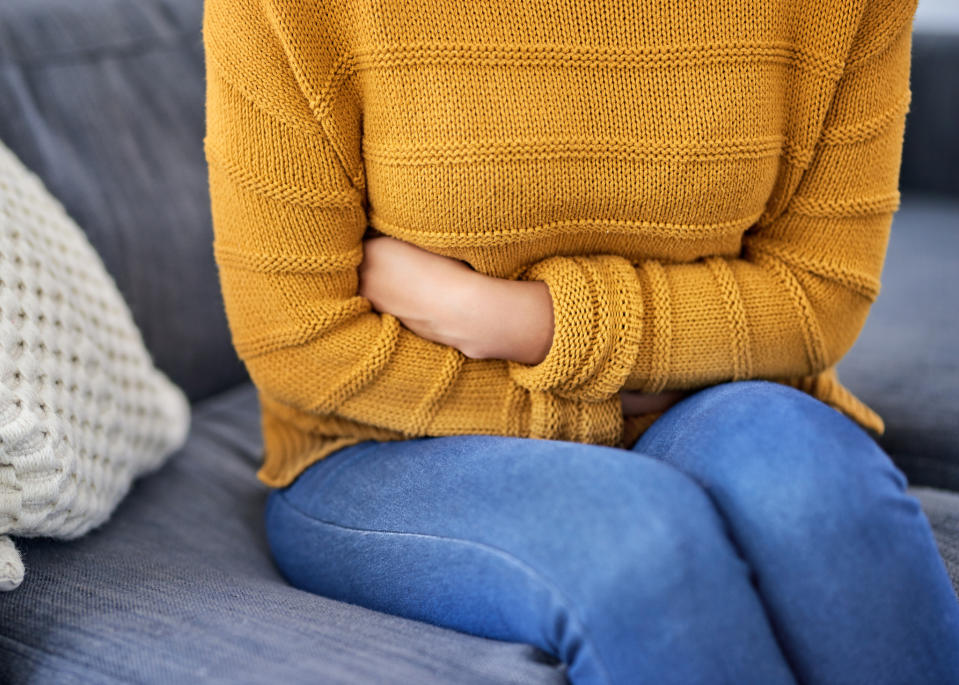Woman's uterus almost explodes after pain dismissed as constipation
A woman who was branded “hysterical” by medics after extreme pain was dismissed as constipation was on the verge of her uterus exploding.
Madeleine Janes, 21, from the UK, had a second uterus where four years’ worth of period blood had built up, causing her the immense pain.
The young woman started to experience excruciating stomach pains that kept her up all night in August 2015. Understandably concerned, she went to her GP to investigate.
No tests were carried out and Ms Janes was told she was constipated and was prescribed Buscopan – a medication used to relieve stomach cramps – and sent on her way.
Ms Janes’ symptoms persisted and started to affect her daily life and pain relief medication didn’t work. She started to sleep in the living room at home so that the television could keep her company during the restless nights.
The pain was so intense that Ms Janes went back to her GP several times and was turned away with her symptoms instantly dismissed as constipation on each occasion.
One nurse labelled her “hysterical” and told Ms Janes’ parents, “you know how worked up young girls get”.

The constant dismissal of her symptoms left her feeling like she was losing her mind, but she knew that something was wrong.
With medical professionals providing little support, she decided to take matters into her own hands by removing gluten from her diet, in case she was coeliac – which didn’t work.
After weeks of pain, Ms Janes went on holiday with her family for her mum’s 50th birthday at the end of August. After the first day, the pain was too much to bear and she went to the local hospital where to her surprise, she was finally taken seriously.
Ms Janes was immediately hooked up to an IV for pain relief, had blood tests, and was moved to intensive care to be monitored closely.
She was even given gas and air for her pain and the nurses and doctors all commented that she looked like a woman in labour.
Madeleine’s shock diagnosis
X-rays and ultrasound scans revealed that she had two uteruses, two cervixes, one ovary, and was missing a kidney. Ms Janes was incorrectly told she had bicornuate uterus – when the uterus forms in a heart shape.
An MRI revealed the source of her pain – her smaller second womb which was blocked and filled with blood that had collected over four years of having periods.
Ms Janes was rushed into emergency surgery where she had over 100ml of blood drained. She spent seven days in hospital to recover and was referred to a specialist in London.
Ms Janes met with the specialist in September 2015 and after an in-depth MRI scan with advanced imaging, she was deemed to have uterus didelphys – a condition where a woman is born with two uteruses, two separate cervixes and sometimes two vaginas, but this is not always the case.
Ms Janes has two wombs, two cervixes, and two ovaries – she also had a piece of skin which had grown over the top of her second cervix which had been causing the blockage with her menstrual blood.

On December 15, 2015, Ms Janes had surgery to remove the skin and was told the next time she would need medical attention for her condition was if she decided to have children. She was told that women with her condition have an 80 per cent chance of miscarriage or premature birth.
This is something that Ms Janes has had to consider from a young age and she even had an ex-boyfriend cite the fact that she may experience complications during pregnancy during a break-up, which was incredibly hurtful.
Ms Janes is passionate about raising awareness for her condition and hopes to help others be their own advocate.
“I’d known all along something wasn’t right, even if I’d been told multiple times by different people that nothing was wrong. Getting taken seriously was the confirmation I’d known I had deserved for weeks,” she said.
“After the diagnosis sunk in, there was a lot of I’ve lived 16 years of my life not knowing what was going on inside me. It’s hard to explain but that’s a really weird thing to get your head around. In the space of ten minutes, I’d gained an organ and lost another organ – plus two uteruses, minus one kidney.
“Without surgery, my second uterus would have continued to fill up every month I had a period and I assume the pain would have persisted.”
Madeleine’s life five years on
It has been five years since Ms Janes’ diagnosis and her experience has made her an advocate for raising awareness for issues surrounding women’s health.
“This September marked five years since I found out about my condition and since then, there are still so many women being dismissed and struggling to get a diagnosis and receive proper treatment and relief from their suffering – something that is so prevalent in the chronic illness community,” she said.

“The research and statistics show that women experience the healthcare system differently to men, and there is a long history of dismissing women’s pain and in 2020 this is still happening.
“You know your body better than anyone else – any nurse, doctor or specialist. Listen to your gut and what your body is telling you and keep persisting even if you keep getting turned away.
“Eventually the right person will hear you and you’ll get the help you need. It just might take a bit of time to get there but never let anyone tell you it’s all in your head.”
Australscope
Do you have a story tip? Email: newsroomau@yahoonews.com.
You can also follow us on Facebook, Instagram and Twitter and download the Yahoo News app from the App Store or Google Play.


